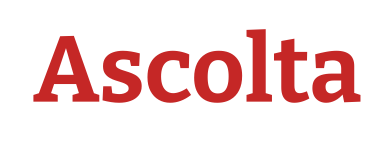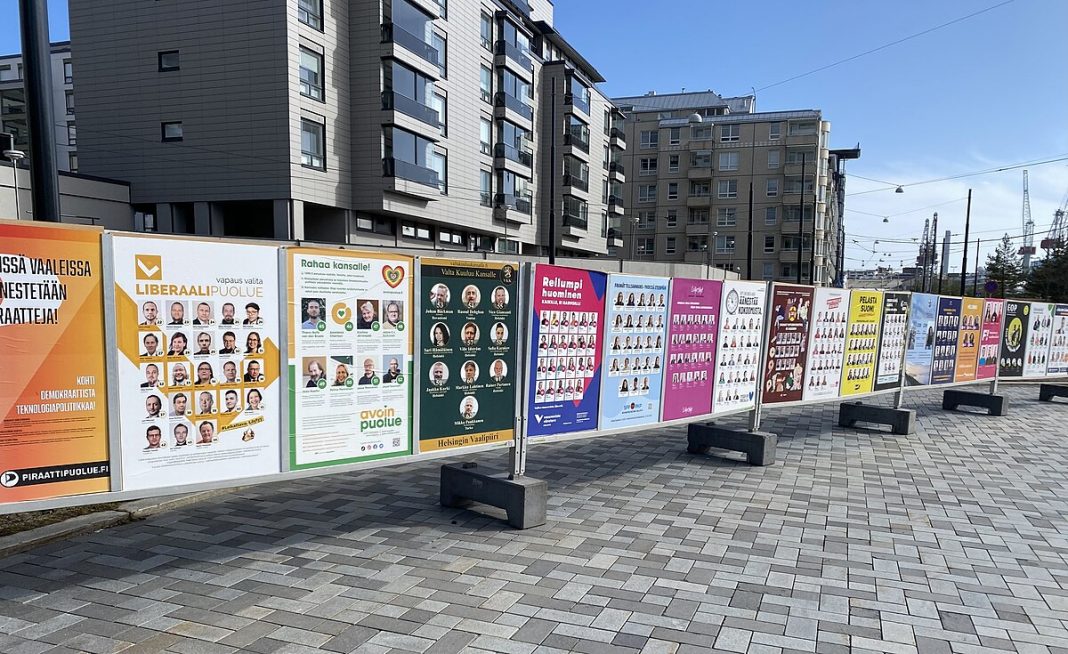The world media have dubbed 2024 “the mother of all election years.” Elections will be organised in 80 countries, home to half the world’s population or over 4 billion people. The most elections in 2024 will occur in Europe – in 19 countries. In 10 of them, the head of state may change, and in 11, the composition of parliament.
Following the Taiwan elections, Finland enters the global election marathon, where 2.4 million people will go to the polls on January 28 to elect a head of state. Of course, they will not receive as much global attention as Taiwanese. However, for Finns, they will be important. This will be the first presidential election in the context of new geopolitical realities: the country’s accession to NATO, the war in Ukraine and a sharp deterioration in relations with the neighbouring Russian Federation.
The current president, Sauli Niiniste, who has headed the state since 2012, was elected to the presidency two times in a row and, according to current legislation, cannot run again. At the end of December 2023, the Finnish Ministry of Justice approved a list of nine candidates who will participate in the presidential elections. The list included Chairman of the Union of the Left Party Lie Andersson, CEO of the Bank of Finland Olli Rehn, Chairman of the Movement Now Party Harri Harkimo, Speaker of Parliament Jussi Halla-Aho, European Commissioner for International Cooperation Jutta Urpilainen, Director of the Finnish Institute of International Relations Mika Aaltola, former Prime Minister of Finland Alexander Stubb, Minister of Agriculture and Forestry Sari Essaia, as well as member of parliament and former Foreign Minister Pekka Haavisto.
In this material, Ascolta analyzes the current socio-political situation in Finland, and also studies the main trends that affect both the further foreign policy vector of the country’s development and public sentiment on the eve of the presidential elections.
This Content Is Only For Subscribers
We will also dwell on the electoral programs, characteristics and ratings of candidates, but for now, let us recall that the rights and responsibilities of the President of Finland have been significantly reduced since the development of the first constitution in 1919. According to the 2000 constitution, Finland is a parliamentary republic where the president primarily performs representative functions. However, the head of state is the Supreme Commander-in-Chief of the country’s armed forces, is responsible for foreign policy and represents the country at NATO summits. Russia’s war against Ukraine significantly added “weight” to the post of the President of Finland because the country’s security issues became sensitive and immediately came to the fore. The “securitisation” of voters’ consciousness forces presidential candidates to include in their election agenda any measures that are interpreted as strengthening national security in the face of the growing Russian threat. Therefore, to better understand the logic of the election campaign in Finland, we will dwell on the topics influencing the public mood of the Finns.
From neutrality to the Finlandisation of NATO
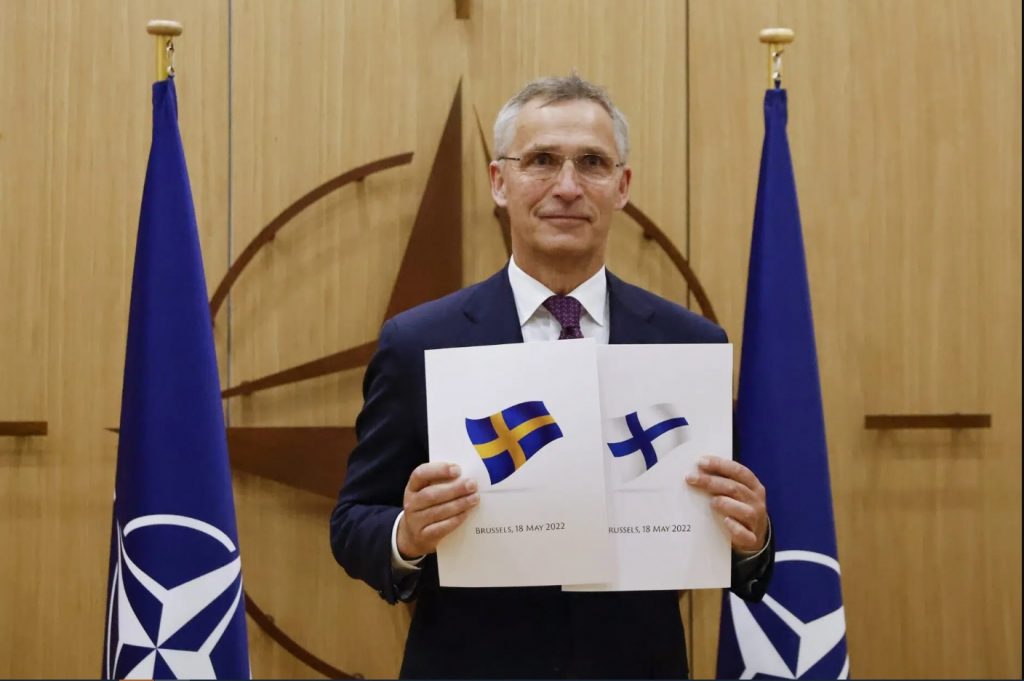
Russia’s full-scale aggression against Ukraine on February 24, 2022, which awakened painful memories in Finland of the 1939–1940 Winter War against the Soviet Union, ended the era of Finnish neutrality and brought the country into the North Atlantic Alliance. Today there is a clear consensus on the NATO issue in Finnish society. Judging by public opinion polls, about 80% of Finns believe it is right for their country to join NATO.
Let us remember that Finland was part of Sweden until the beginning of the 19th century and was occupied by Russia twice during the Russian-Swedish wars. In 1809, it became the Grand Duchy of Finland as part of the Russian Empire. In 1917, the Russian Provisional Government refused to recognise Finnish independence. The Bolshevik government did this by their proclaimed right of nations to self-determination. In the winter of 1939-40, the Finnish armed forces stubbornly resisted the Soviet invasion (the third armed conflict between Finland and Russia in 20 years). Still, they ultimately lost the Winter War and part of their territories. Finland entered World War II as an ally of Germany and again found itself on the losing side.
As a result of the war, the Paris Peace Treaty was concluded in 1947, usually referred to as the document that determined the neutral status of Finland. Honestly, Finland has secured not only sovereignty and the preservation of a market and democratic system but also exceptional, extremely profitable economic ties with Moscow. From the late forties to the early nineties, Soviet-Finnish relations served as a model of fruitful compromise between states with different socio-political formations.
The country’s post-war foreign policy gave rise to “Finlandisation” in historiography, meaning loyalty to a powerful neighbour. In practice, the status quo suited everyone. However, Russia’s aggressiveness deprived it of this support in relations with Finland. Like other European countries, Finland immediately condemned Russia’s invasion of Ukraine, citing the threat to its national security. “At the moment, Finland does not face a direct military threat, but the discourse on Finland’s accession to NATO will change,” Prime Minister Sanna Marin said at the time. And Finnish President Sauli Niinisto, when asked what he thought of Putin, spoke out definitely: “The masks have been removed, and only the cold face of war remains.”
In February 2022, 53 per cent of Finns were in favour of joining NATO; in March, 62% supported joining; in May, 76%.
On May 18, 2022, Finland applied to join NATO. The Finnish parliament voted almost unanimously for this decision. On the birthday of the North Atlantic Alliance on April 4, 74 years later, Finland became a member of NATO. The process of its adoption turned out to be the fastest in the history of this organisation.
However, NATO has never been “terra incognito” for Finland. Even before joining the alliance, they had a close relationship. Since 1994, Finland has joined the Alliance’s Partnership for Peace program. Since then, it has gradually abandoned Soviet weapons and switched exclusively to Western models. She also built all her military production according to NATO standards. In 1995 and 1999, Finnish military contingents participated in operations in Bosnia and Kosovo as part of NATO forces. One can also recall the participation of the Finnish army contingent in the NATO operation in Afghanistan. In short, Finland and the alliance have long had a “combat brotherhood”.
If we talk about the Finnish army, then according to NATO headquarters in Brussels, it can independently ensure the security of its borders. The Finnish Armed Forces are considered to be well-prepared, trained and motivated. Unlike other countries, the Finns did not reduce military funding after the Cold War and never abolished universal conscription for men. Finland currently has about 24,000 active-duty soldiers and more than 900,000 reservists. In the event of an attack, the Finnish Land, Navy and Air Force could be increased by another 280,000 people, which is already a significant force. Additionally, in Finland, there is a concept of total defence: in an enemy attack, all citizens will defend the country. This is considered the optimal standard. The basis of the Armed Forces is made up of light units armed with small arms. However, there is a tank brigade, a reasonable air force (Helsinki recently purchased 64 F-35A fighters), artillery units, and a navy. The weapons in service are mainly those made in the USA, Germany and neighbouring Sweden.
However, Finland also has its military-industrial complex. Thus, the SAKO concern produces small arms with an outstanding demand worldwide. The Patria company produces mortars, drones, control systems, and spare parts, including for imported equipment. Sisu Auto specialises in the production of infantry fighting vehicles and trucks. Nammo, a joint Finnish-Norwegian company, produces ammunition and warheads for missiles. Agree, this is not such a small production for a small country of 5.5 million.
In addition, Finland is ready to export ammunition to Ukraine. Late last year, the country’s Defense Minister Antti Häkkänen said that a plan had been agreed to increase ammunition production for Ukraine significantly. According to the head of the Finnish defence department, Helsinki also turned to its allies with a request to increase the production of shells for Ukraine. “The armament of Ukraine is the most important issue for us. The main priority of our influence on the EU and NATO is to push larger countries, especially in Europe, to increase the production of ammunition,” he emphasised.
Finland’s accession to NATO influenced the country’s security issues and many global processes. Firstly, the old European security architecture, the legacy of Finnish neutrality, has become a thing of the past.
Secondly, Suomi’s new status has changed the balance of power in the Arctic and increased its militarisation. The Arctic region is known for the confrontation between the United States, the Russian Federation and several other countries over the possession of natural resources in the era of climate change. In addition, the most essential component of this struggle is logistics along the Northern Sea Route. Although Finland does not have direct access to the Arctic Ocean, its territory provides the United States and its allies with strategic depth in the Arctic and increased operational capabilities in the region.
Thirdly, the Baltic region was essential for developing Sweden, Finland and Russia. The Baltic remains significant for these countries even now, as evidenced by the special place of Kaliningrad in the defense system of the Russian Federation. The entry of Finland and Sweden into the alliance will automatically “de-neutralise” the Baltic Sea and potentially threaten this Russian region. Attempts by Russian President Putin to push NATO borders away from Russia had the exact opposite effect, and the direct contact line between Russia and the alliance was 1,300 km away. The border between Finland and the Russian Federation has doubled.
Fence as a moral symbol
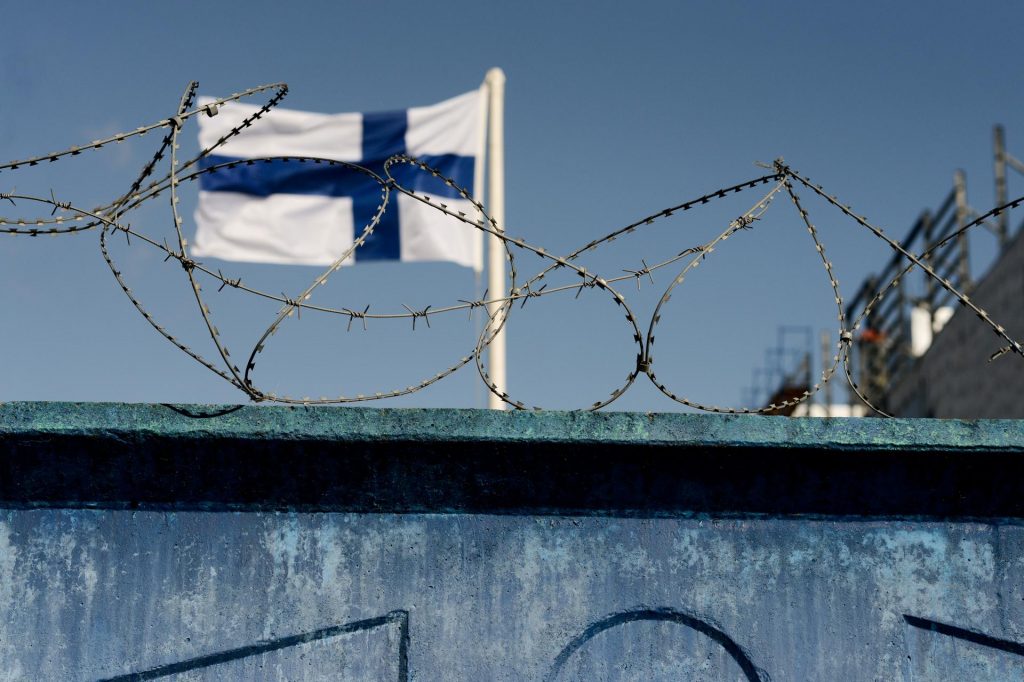
Another existential issue for Finns is the relationship with the Russian Federation. In a November survey (the results of which were published on the Finnish broadcasting portal yle.fi), more than 90% of respondents said they considered Russia “unstable and unpredictable”, almost the same number – an “expansionist superpower” and a “serious military threat”.
This means that the days of pragmatic cooperation and dialogue, when Helsinki sought to avoid conflicts, are finally over. An era has begun in which Finland, a member of the EU and NATO, behaves as a responsible member of the Western coalition. The full-scale Russian invasion of Ukraine destroyed decades of good neighbourly relations between Moscow and Helsinki, and today, these relations are hitting rock bottom. In recent years, the structure of bilateral cooperation between Russia and Finland, created over decades, has been almost completely destroyed. Is it any wonder the closure of the Finnish consulate in St. Petersburg,” which was once dubbed a “visa factory,” or the Russian consulate in Turku, where a kindergarten will be built after the building is demolished?
Back in September 2022, the Finnish Border Guard announced its intention to build a fence on the country’s eastern border due to “recent changes in the security situation.” Today, the Finnish authorities are reporting the commissioning of a test section with a length of about three kilometres near Peltol in Imatri, South Karelia and the construction of another 300-meter-long fence in the area of the Immola military garrison. The construction of the fence, which will cover an area of 200 kilometres, is scheduled to be completed by 2026. The total cost of the project is estimated at $425 million. Although the structure’s functionality is assessed somewhat sceptically, it is already a moral symbol of the “new era” and an indicator of the state of Russian-Finnish relations.
On November 30, 2023, on the anniversary of the start of the Winter War of 1939–1940, Finland closed its border with Russia, becoming the first country to take such a step. Even the Baltic countries, which traditionally have a much more hostile attitude towards Russia, do not yet plan to repeat the Finnish experience. The Finns motivated the decision to close the border for the near future with the desire to stop the sharp influx of Middle Eastern and African refugees from Russian territory, which Helsinki considered a “hybrid operation” organised by Russia in retaliation for the country’s accession to NATO. For now, all border crossings are closed until February 11, but there is little hope for their opening.
The process of the “divorce” of the Russian Federation from the once-friendly Finland is every day being supplemented with new colours of by no means rosy shades. For example, the Finnish government plans to completely ban real estate transactions for Russian citizens in the spring of 2024. There is a “search for the necessary legitimate legal grounds” for introducing this ban. “Certain decisions can be made in the spring. In addition to a complete ban on transactions in Finland for citizens of the Russian Federation, an investigation will also be conducted into real estate properties already sold to Russians,” said the head of the Finnish Defense Ministry, Antti Häkkänen.
The icing on the cake
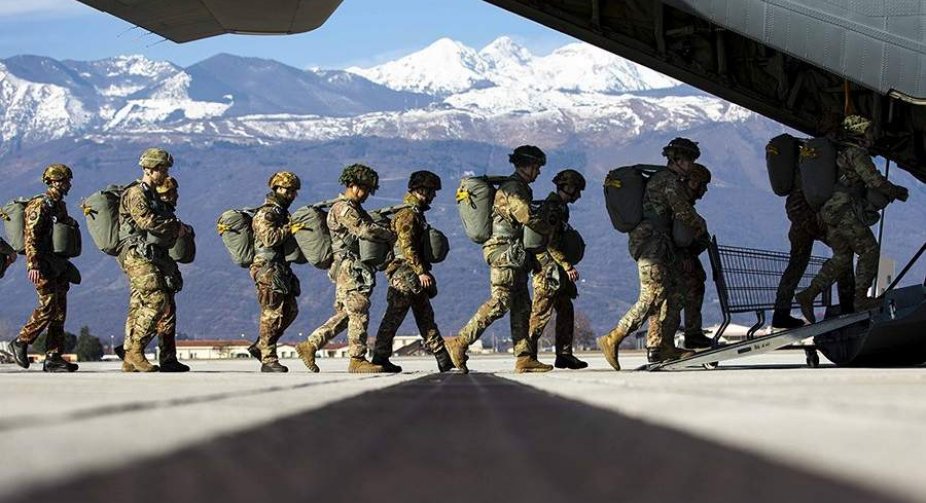
A “hornet stake” was driven into the once friendly Russian-Finnish relations by the signing of the Framework Agreement on the Defence Alliance between Helsinki and Washington on December 18, 2023. This is sort of the icing on the cake in the process of “securitisation” of Finland.
Helsinki considered that the mere fact of membership in this bloc does not guarantee the complete security of their country. The new agreement is designed to strengthen and facilitate significantly, in terms of formalities, cooperation between Finland and the United States in the military sphere. The document provides for unhindered access of the US armed forces to facilities in Finland, including military bases, ports, airfields, and roads. The priority region in the agreement was polar Lapland – 5 of the 15 preparation sites and storage points specified in the agreement are located here.
One of these places was Rovajärvi, the most significant military training ground in Western Europe. It covers an area of 1,070 square kilometres and is used for large-scale military exercises that can involve up to 3,500 people.
The agreement also includes the Lapland Air Command’s air base and the Jaeger Brigade’s garrison in Rovaniemi. The document also mentions military warehouses in Tervola and Veitsiluoto. The northernmost facility is the border base in small Ivalo, which is located 50 kilometres from the Russian border and is connected by road to the Russian Murmansk region. The Raja-Jooseppi border checkpoint is located here. On the Russian side of the border in Alakurtti, the 80th motorised rifle brigade called the Arctic Brigade, is stationed.
From the statements of Finnish officials, it follows that there is no talk of creating a separate permanent American base on the territory of their country. However, the entire territory of Finland can be considered a military bridgehead for the United States. The United States has similar agreements with nine other NATO countries. On December 5, Sweden signed a similar agreement with the United States (at the same time as Finland, it applied to join NATO but has not yet received approval from all members of the alliance). Denmark recently completed negotiations on developing the same document with the United States.
Finland’s signing of a defence alliance agreement with the United States has seriously alarmed the Kremlin. The Finnish Ambassador to Moscow, Antti Helantery, was summoned to the Russian Foreign Ministry, where they warned that the country’s authorities “will not leave NATO’s military buildup on its border unanswered.” In the spirit of the Cold War, they assigned responsibility for turning the “zone of good neighbourliness” in this region “into a zone of possible confrontation” onto the Finnish authorities. Russian President Vladimir Putin threatened Finland with problems due to joining NATO: “There were no problems, now there will be. Because we will now create the Leningrad Military District and concentrate certain military units there.”
In the new geopolitical realities, where the stakes are higher than ever, the future president faces serious challenges to respond to, which, without any pretentiousness, will determine the future of Finland.
Favourites
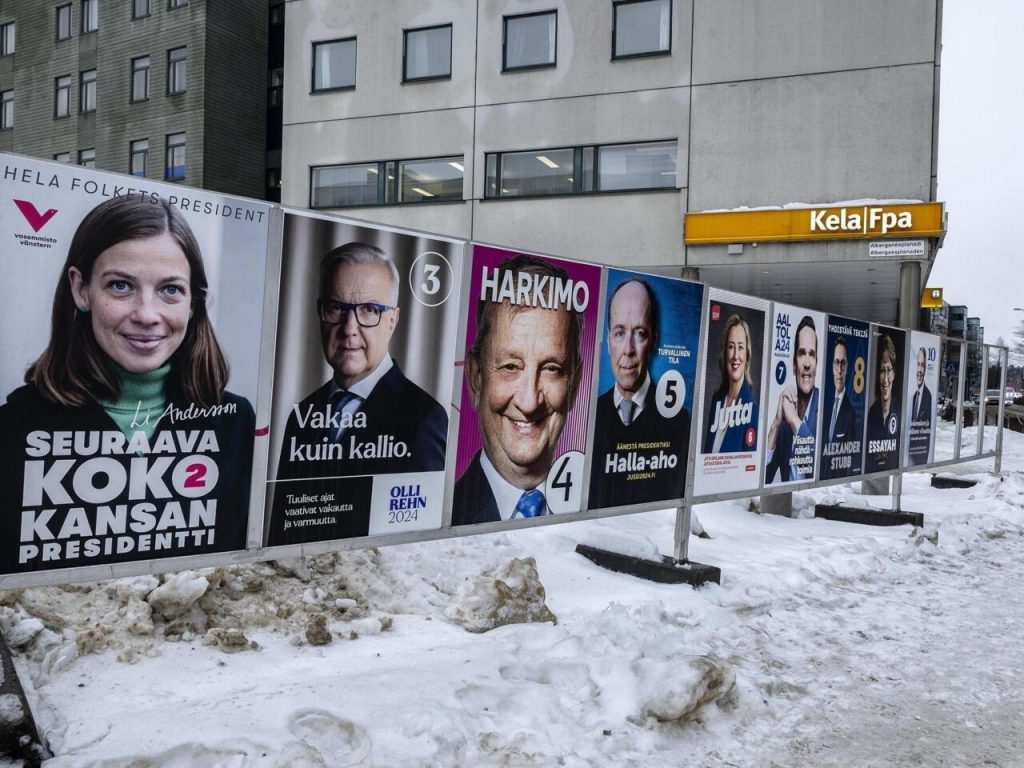
Although the actual day of the presidential election in Finland will be Sunday, January 28, voting started on January 17. Early voting is underway in the country, which will last a week. It is important to note that advance voting is quite popular among Finnish citizens. Thus, in the 2023 parliamentary elections, 40% of eligible voters voted early.
All recent polls show that the favourites in the presidential race have already been determined. This is Pekka Haavisto, former Minister of Foreign Affairs and Member of Parliament from the Green Union Party and former Prime Minister of Finland, member of the National Coalition Party Alexander Stubb. They are predicted to advance to the second round of the presidential election, which will take place on February 11.
65-year-old Pekka Haavisto is a veteran of presidential election battles. He also ran for president in 2012 and 2018, finishing second to incumbent President Niinista. This time, Haavisto ran in the elections as an independent candidate. The main “trick” of his campaign is the country’s security. As Haavisto notes, at meetings with voters the topic of security was a top priority. “You can hear a nail drop in the room when you talk to voters about security issues,” the candidate notes. He said his focus on the topic uniquely positions him to take on foreign policy challenges as president.
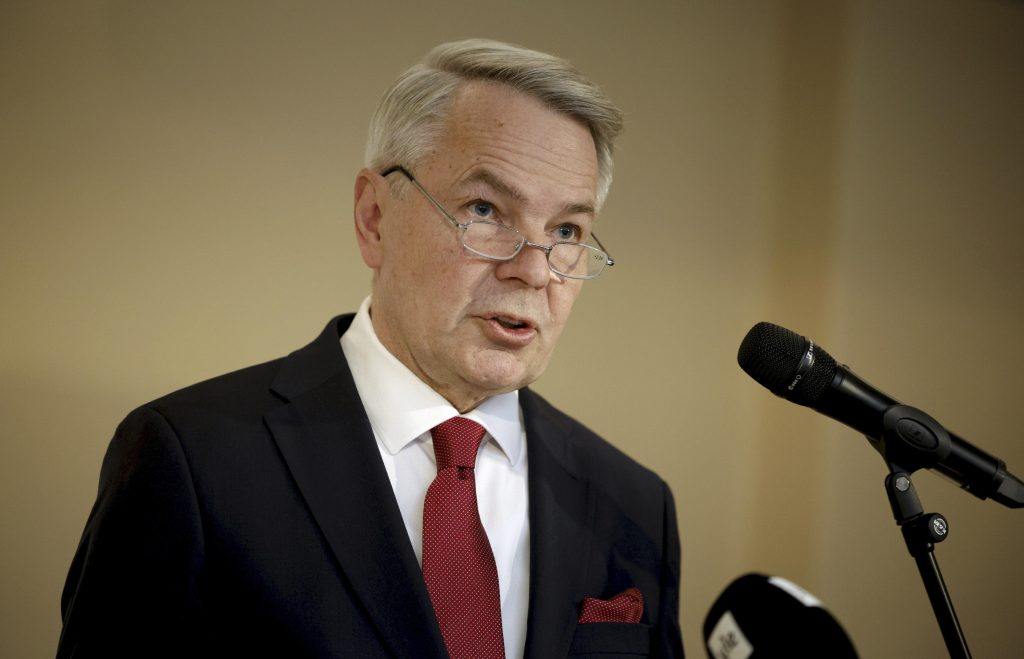
Haavisto was one of those who negotiated Finland’s accelerated entry into NATO and is proud of having found the necessary arguments for Finland’s rapid accession to the alliance. And he wholeheartedly approves of the recent signing of a defence alliance between Helsinki and Washington since, in his words, “… this increases the security of Finland in many respects.”
Another topic included in all candidates’ agendas is relations with Russia. Haavisto knows the Russian Federation well. During the 2012 election campaign, he said he believed in a democratic Russia. However, he now notes that a challenging crisis has begun in the neighbouring country, and he does not believe in the democratic future of his eastern neighbour. In his opinion, the Russian Federation will become an isolated, centralised, authoritarian country controlled by a dictator. However, as Yle notes, concerning the candidate, even in these conditions, it is possible to conduct a dialogue with all parties. This also applies to Russian President Vladimir Putin: “Sometimes wars end with dictators ending up at the negotiating table,” said the former Foreign Minister. At the same time, he recalled that at the level of leaders, the EU does not negotiate with the Russian side, but contact is maintained through diplomatic channels.
Haavisto is a supporter of the policy of containing Russia. He wants to prohibit the possibility of simultaneously having Russian and Finnish citizenship. There are 36 thousand such citizens in Finland. Haavisto fully supports the closure of the border with Russia. He believes “this is the only thing that can be done to show the Russians that we are serious.” At the same time, he calls for increased admission quotas for women and girls from Afghanistan and Iran. He does not share the views of those who use Russia’s actions at the border to support rhetoric against asylum seekers. Haavisto also does not like that after the parliamentary elections; a coalition came to power, which has already been dubbed the most right-wing in the entire history of Finland. He sharply criticises the deteriorating Finnish politics since some parties, citing freedom of speech, are very tolerant of hate speech and violence. According to him, many people of colour living in Finland are susceptible to racism, and as president, he would like to change things.
For Haavisto, tolerance is not an empty phrase. He is gay and is in an official “civil partnership” with 45-year-old Ecuadorian hairdresser Antonio Flores. Haavisto once met his lover while travelling in Colombia and subsequently invited him to his homeland. By the way, his husband is helping Haavisto in the election campaign. As the presidential candidate notes, a couple’s joint participation in elections positively affects citizens’ opinions about same-sex marriage: “… because they see that someone at the top of power can also represent similar values.”
If he is elected to the presidency, it will be the second time an openly gay president will lead a European state. Let us recall that the first head of state with a non-traditional sexual orientation was the President of Latvia, Edgars Rinkevich.
Haavisto’s opponent and direct presidential competitor is 55-year-old Alexander Stubb, a professor at the EU University in Florence, PhD. For the last few years, he has not participated in political activities. However, he has an impressive political portfolio: the position of Prime Minister of Finland, Minister of Foreign Affairs, Deputy Director General of the European Investment Bank, Member of the Finnish Parliament, and Member of the European Parliament. Stuu was the head of the currently ruling National Coalition party in Finland. Stubb’s international experience, language skills and extensive connections worldwide provide him ample opportunities for the presidency.
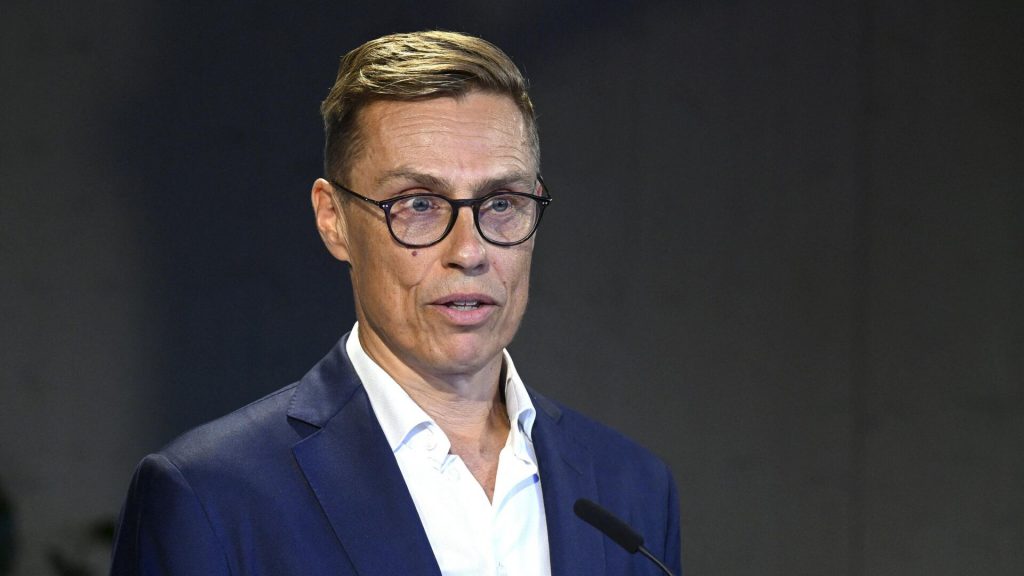
Stubb is married to an Englishwoman, Suzanne Innes-Stubb (a professional lawyer). The family has two children: daughter Emilia and son Oliver-Johan. One of Stubb’s greatest passions is sports. He was a Finnish national golf team member several times and played hockey and football. He enjoys skiing, cycling, swimming and running, and continues to play golf.
Alexander Stubb initially announced that he had no intention of running for president, telling everyone that he would not trade his academic robes for the presidency. However, the leadership of the National Coalition party, represented by the current head of government, Petteri Orpo, found the necessary arguments. Stubb agreed: “In the current geopolitical situation, the answer is clear: if the homeland calls, then we go.”
In general, Stubb’s campaign rhetoric is no different from most presidential candidates, but his bonuses are personal charisma and extensive experience in international affairs. By the way, he states this: “…Finland needs a head of state with experience in international politics,” which hints at his modest persona.
He sees the primary vector of foreign policy in strengthening ties with the United States, EU countries and NATO: “In international politics, you need to try to understand all sides. Be it the global West, the global East or the global South. I have relatively good relations with some people in Russia. However, I imagine the next President of Finland, first of all, as a Western President, as a NATO President, and one of the most important relationships is the alliance with the United States,” emphasises Stubb.
By the way, at the last presidential elections in Finland in 2018, the topic of NATO practically did not figure in political debates; moreover, the current President Niinistö criticised the candidates for the fact that all of them, except him, were opponents of Finland’s entry into the alliance. Stubb had advocated North Atlantic integration since 1995 and was in the minority then. Today, Stubb states, “It is essential that we in Europe take care of our defence.” He explains: “In this sense, I largely agree with the current President of Finland, Sauli Niinistö, who said that we need a more European NATO.” Stubb did not decipher what a more European NATO is but perhaps made it clear to everyone that Finland’s interests lie in Europe and not in the Asia-Pacific region, where the European members of the alliance are persistently being “pushed” by the United States and Great Britain. Indeed, in the event of an escalation in the Asia-Pacific region, one of the critical roles of European NATO members will be to support economic sanctions against China. Professor Masahiro Matsumura from the University of St Andrew said: “Many European countries are reluctant to accept China’s confrontational approach to security to maintain strong trade and economic ties.”
The next issue on Stubb’s agenda is relations with Russia. He shares the opinion of Finnish Foreign Minister Elina Valtonen that Russia does not pose a direct threat to Finland today. According to him, Russia is unlikely to test the stability of the principle of collective defence, Article 5 of NATO, but we must always be prepared for this. If he wins the elections, he will not maintain political contacts with the Russian authorities until the war in Ukraine ends. However, Stubb emphasises cooperation between the border services and diplomats of the two countries continues. The politician stressed that he is not interested in the further deterioration of diplomatic ties with Russia, which are already extremely bad at the moment.
Much attention has been paid to Ukraine in his election agenda. According to Stubb, Ukraine is already a winner in the war because it remains an independent state and is on the path to joining the EU and NATO. Stubb’s plan for Ukraine boils down to restoration of territorial integrity (in Finnish – this is called the Karelian issue), security guarantees, and membership in NATO/EU. Next comes justice: bringing war criminals to justice and rebuilding the country. However, he does not rule out that by the time Finland takes over the OSCE in 2025, it could act as a peace mediator: “Maybe then we will already be in a situation of a peace agreement and ceasefire, and Finland could act as a mediator. But this requires an international mandate, not bilateral relations.” However, he immediately added that such a scenario is unlikely, but if a proposal is made, Finland – as a mediating country – could continue its mission to promote peace in the spirit of Martti Ahtisaari.
In the meantime, according to Stubb, Russia and Ukraine can begin peace negotiations if other countries put pressure on them. “To begin peace negotiations, it is necessary for states such as China and the major powers of the global East and South to put pressure on Moscow to come to the negotiating table. If this happens, the United States and Brussels will undoubtedly have to do the same with Zelensky to convince him that negotiations have come. There must be pressure on both sides,” the newspaper 20 Minutos quotes Stubb as saying.
According to the latest opinion polls, the favourites are neck and neck, and Stubb’s leading position is within the margin of error. Thus, a survey published by the leading Finnish newspaper Helsingin Sanomat on December 26 showed that he was supported by 24%, and his primary opponent Pekka Haavisto – 22%. Stubb also took first place in the ranking of candidates compiled by the Yle broadcasting company in November 2023. 28% of voters would vote for him, and 26% for Haavisto. Although recent trends show that Stubb is gaining, his support has increased by 6% since October, while Haavisto is losing – his rating has fallen by 3%.
In January 2024, a fresh survey by the Uutissuomalanen news agency already puts Pekka Haavisto in the lead with 22% support. Alexander Stubb is 1% behind his opponent. However, we see that the difference between the candidates remains at the level of sociological error.
And other candidates
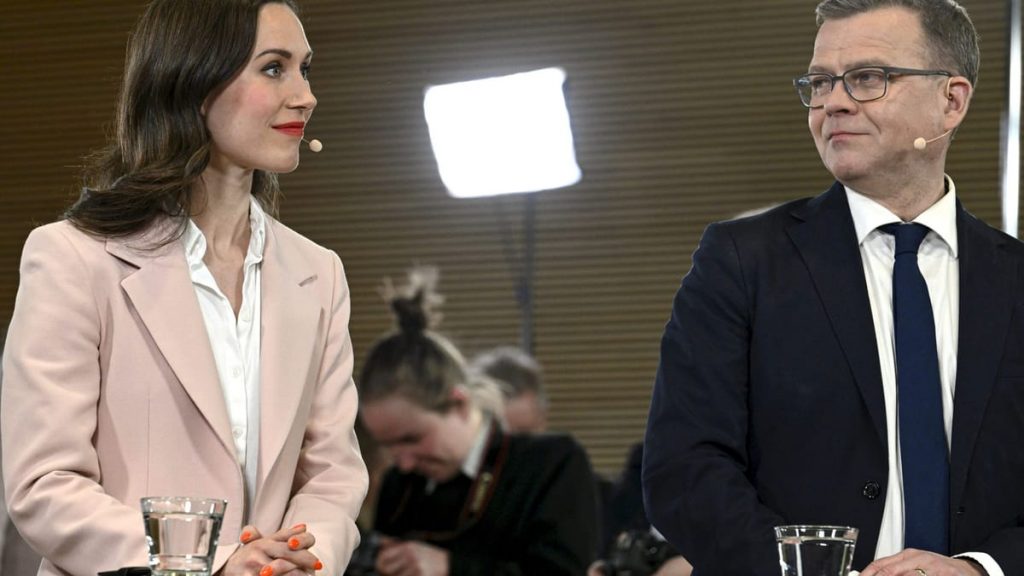
Against the background of clear favourites, the remaining candidates continue to lose. Third place, with a support level of 11%, is shared by the candidate from the Center Party, Olle Rehn, and the Speaker of the Parliament (stunts) of Finland and the head of the right-wing radical party “True Finns” Jussi Halla-aho.
As for Ren, he is not a great expert on foreign policy and security issues. His principal place of work is the director of the Central Bank of Finland. Therefore, in his agenda, he pays a lot of attention to international finance, including its use to help Ukraine. Ren wants Russia’s frozen foreign exchange assets to go towards rebuilding Ukraine. He advised the European Union to use the fixed assets of the Central Bank of the Russian Federation for 260 billion euros to help Kyiv. He believes such a strategy is “…realistic, reliable and long-term.” Olli Rehn also called on the European Union to prepare to use funds from the European Stability Mechanism (ESM) for 80 billion euros to help Ukraine. “We don’t have an urgent need for a European financial stability mechanism, but we do have an urgent need, an immediate need in Ukraine,” says the candidate.
During his nomination, the speaker of Parliament and head of the right-wing party “True Finns”, Jussi Halla-Aho, said that he has enough knowledge in the field of politics and an understanding of what a head of state should be.
He does not stand on ceremony with Russia; according to him, Finland will not return to its previous relations with the Russian Federation. “Now Russia is almost completely isolated or was isolated – both politically and economically. It is quite natural that one of the president’s main tasks will be to establish bilateral relations with our main allies – the USA and Great Britain,” he emphasises. Halla-aho considers it a “historical injustice” that at one time the USSR seized some Karelian territories from Finland. Still, he considers their return “unrealistic.” Halla-aho is also remembered for calling for the murder of Russian army soldiers and ordering the inscription “For the Freedom of Finland” on a Ukrainian shell through an exceptional service.
Another strong point of Halla-Aho is the tightening of immigration policies. He proposes changing the conditions for obtaining Finnish citizenship so that citizenship can be revoked if necessary. He also suggests considering the feasibility of a quota system for refugees and introducing accounting for the expenditure of public funds on the needs of immigrants by national groups. Halla-aho believes that ex-migrants should be cut off from becoming deputies and ministers. In addition, as a “true Finn”, he expresses fears that the dependence of Suomi and the West in general on China may become too strong.
The candidate from the opposition Social Democratic Party, European Commissioner responsible for international cooperation in the European Commission, Jutta Urpilainen, came in fifth place with a support rating of 7%.
She believes that the President of Finland should help ensure that support for Ukraine in the war against Russia continues. And the development of a new policy towards Russia will depend on how the fighting in Ukraine ends. However, Urpilainen does not forget to note that “Russia is our neighbour; it will remain our neighbour in the future.” As for closing the borders with the Russian Federation, in her opinion, this measure is temporary, and Finland must comply with international agreements. Still, their revision is possible under certain conditions.
Answering a question from journalists about the possible deployment of nuclear weapons in Suomi, Urpilainen recalled that this is prohibited by Finnish law. “I think it’s pretty obvious. I personally spoke with NATO Secretary General Jens Stoltenberg, and I am sure that NATO is aware of our legislation,” Urpilainen reassures voters. According to her, NATO’s long-term goal is a world without nuclear weapons.
In sixth place, with a rating of 5%, is the former Minister of Education, chairman of the opposition party “Union of Left Forces” Lee Anderson. In the last presidential election in 2018, the Union of Left Forces candidate, Merja Kyllenen, gained 3%. Judging by the level of support for left-wing candidates, conservative Finns do not hold their views in high esteem. Lee Anderson says she is a socialist and Marxist; her primary value is freedom. She is for the observance of justice and human rights in the country and believes that there are problems with this in Finland today. She is concerned about the strengthening of right-wing radical sentiments in the country and the attack on the rights of ex-migrants, the so-called “new Finns.” In this regard, she criticises the speaker of parliament, the right-wing radical Halla-aho, for his proposal to deprive citizens who are not Finns by birth of the right to stand for parliament. In her opinion, such proposals make many Finnish residents feel like strangers in this country.
She also pays attention to Ukraine on her agenda. She considers it “extremely important to support Ukraine’s progress on its way to becoming members of the European Union.” She is ready to help Kyiv carry out the reforms necessary for this. As for NATO, she is more reserved than other candidates: “We need to focus on cooperation with other Nordic countries and hold on to those starting positions that we at the national level have always considered important since NATO does not influence our foreign policy.”, Andersson believes. As Helsingin Sanomat notes, Lee Anderson is the only one of the nine candidates who opposed the complete closure of the checkpoint on the Russian-Finnish border with Russia. She stated that Helsinki must respect international obligations and the provisions of the Constitution even in the most crises.
The top three outsiders are completed by an independent candidate, the director of the Finnish Institute of International Affairs, the famous political scientist Miku Aaltola, who is supported by 4% of voters, a member of the Helsinki City Council, the renowned businessman Harri Harkimo and the leader of the Christian Democrats, Minister of Agriculture and Forestry Sarri Essaiah, whose support rating fluctuates by level 2%.
Mika Aaltola is a supporter of tough measures against Russia and calls it a “semi-fascist” country. Aaltola is going to the elections under the slogan of “strengthening the eastern border” and the need to increase the military budget to 3% of GDP. He assures that “increasing investment in defence can benefit the economy as a whole.” Aaltola proposes reforming the Finnish ground forces, as well as purchasing new naval drones and submarines.
Aaltola does not hide his sympathies for Ukraine. If elected, he is ready to continue to support it: “This is extremely important at a time when the will to support Ukraine in the West is weakening. If we become despondent, we will increase the likelihood of future wars in Europe,” emphasises the director of the Finnish Institute of International Relations.
The Minister of Agriculture and Forestry, Sarri Essaia, nominated by the Christian Democrats, is also on the generally accepted agenda in Finland. In her opinion, Finland will be able to develop relations with its eastern neighbour only with a change of power in Russia. “It’s impossible to do this with Putin’s regime,” Essaya is sure. She believes that “… one of the conditions for Russia’s return to world politics should be the participation of the Russian Federation in the post-war reconstruction of Ukraine.” Essaya calls for “maintaining solidarity with Ukraine at the European level,” in her opinion, allowing Ukrainian grain to enter the EU market is necessary.
Finland is known for its tolerance towards the LBGT community. On July 1, the Finnish capital hosts Helsinki Pride under rainbow flags, an event dedicated to equality and protecting minority rights. Last year, about 100,000 people took part in the event. Usually, this event enjoys the patronage of the authorities. Former Prime Minister of Finland Sanna Marin of the Social Democratic Party has been a guest of Helsinki Pride several times. Even the Finnish Evangelical Lutheran Church paid attention to the pride parade. The leader of the Christian Democrats surprised many by publicly declaring that she has not and will not take part in the traditional Pride parade due to its political goals. I must say that she was not alone. In 2023, Prime Minister Petteri Orpo, representing the right-wing coalition, also announced without explanation that he would not participate in the Helsinki Pride event. According to the event organizers, coalitionists and centrists will not be partners with Helsinki Pride because of their position on the transgender law.
An outsider in the presidential race, 70-year-old businessman Harri Harkimo is known as a member of the Helsinki City Council and the former owner of the Helsinki hockey club Jokerit. Last year, septuagenarian Harkimo made the tabloid covers after marrying public relations specialist Yasmina Payara, who is thirty-five years his junior.
He is running for president from the liberal Movement Now party. Harkimo fully shares the opinion on the need for a strict policy towards Russia, mainly supporting the closure of the Russian-Finnish border. True, extremely aggressive rhetoric towards Russia looks like a defensive reaction and a desire to justify oneself for past sins. Harkimo constantly fends off journalists who remind him that he once sold the Helsinki Arena to Putin’s oligarchs Timchenko and Rotenberg and participated in Jokerit’s transition to the Russian Kontinental Hockey League. Today, the Finnish authorities want to return the arena to Finnish ownership. Harkimo calls the last deal a “mistake” and justifies himself by saying he began cooperation with the Russians long ago. “It’s easy to say now that it was a mistake, but everyone is strong in hindsight,” says Harri Harkimo.
Overall
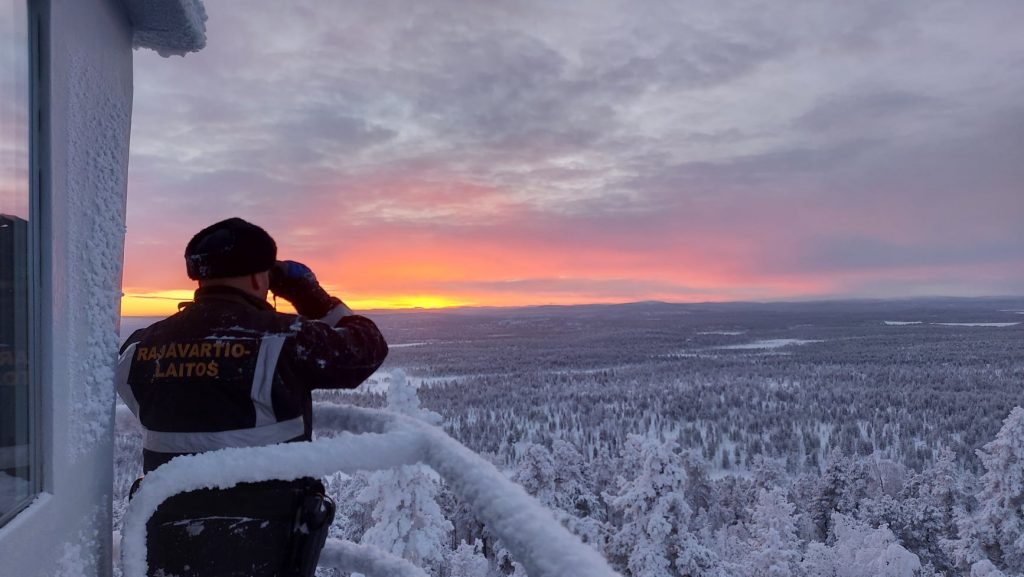
The presidential race in Finland is coming to the finish line with two clear favourites, Pekka Haavisto and Alexander Stubb. Haavisto is mainly voted for by supporters of his party, the Union of Left Forces and the Social Democrats. The Greens candidate is particularly popular among women. He can also count on outstanding support in the capital region. Stubb is more popular among men and residents of Eastern and Northern Finland. Moreover, the decisive role in determining the winner of the presidential election may belong to a large group of voters who do not support any of the parties.
Another reserve is undecided, whose share increased by six points compared to the previous survey and amounted to 19%. According to experts, none of the other candidates will be a “surprise” for the favourites and will not be able to prevent them from reaching the second round, which will take place on February 11. And if, in the first round, many people prefer Haavisto, then most voters would vote for Stubb in the second round. 55% of voters would vote for him, and 45% for Pekka Haavisto.
Even though elections in Finland are not one of the critical links in a geopolitical context, the presence of NATO factors, interests in the Arctic and a common border with Russia make this northern country one of the important arenas in the struggle for a new world order. From this point of view, monitoring political processes in Finland looks much more important.
